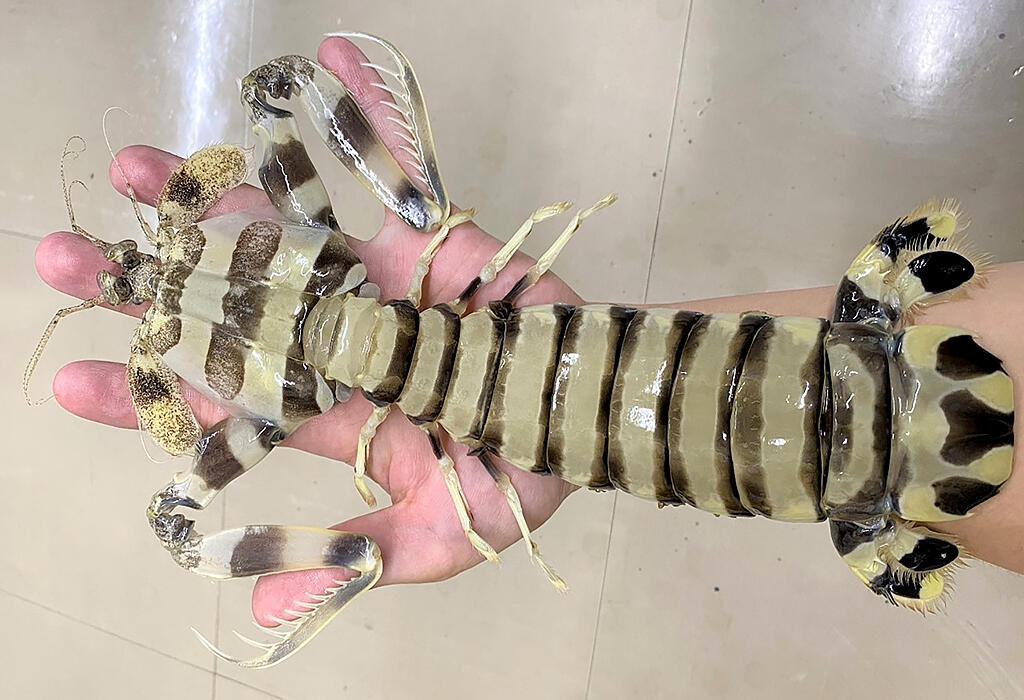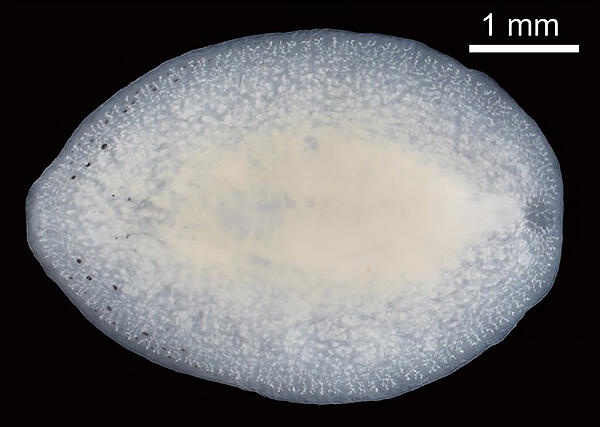A research group consisting of Assistant Professor Yuki Oya of the College of Arts and Sciences, J. F. Oberlin University, graduate student Hiroki Nakajima of the Graduate School of Engineering and Science, University of the Ryukyus, Professor Hiroshi Kajihara of the Faculty of Science, Hokkaido University, and their colleagues has discovered a new species of flatworm on the bodies of mantis shrimp collected from the tidal flats near a popular spot known as Kamiji (Urasoe City, Okinawa Prefecture). According to Assistant Professor Oya, "This research started from two flatworms discovered by chance on the body of a Lysiosquilla maculata (mantis shrimp). Further specimens were needed to examine their true form, but large mantis shrimps are not easily captured. When they were caught, we worked to check whether any flatworms were present, and progressed accordingly."

Provided by Nakajima Hiroki

Provided by Oya Yuki
The research itself saw nine Lysiosquilla maculata caught from the tidal flats from 2020 to 2021. The group collected a total of 41 flatworms from the bodies of five of these mantis shrimps. They observed the internal form of the flatworms obtained via continuous paraffin tissue sectioning, determined multiple partial genetic sequences and estimated systematic positioning.
They judged that the collected flatworms were of the genus Emprosthopharynx. Before this, seven species of Emprosthopharynx flatworm were known around the world. When a close comparison with these species was carried out, it became clear that the collected flatworms did not fit into any of these species and so were an unlisted species. The group announced them as a new species named Emprosthopharynx lysiosquillae. It is known that various shellfish species exist symbiotically or parasitically in the burrows or on the bodies of mantis shrimp, but it was not known if flatworms exist symbiotically with mantis shrimp, making this discovery the first report in the world of flatworms with a symbiotic relationship with mantis shrimps.
Moreover, as a result of careful observations of their form, the group identified structures they believe function as suckers on the flatworms' bodies. Other flatworms with suckers are known, but the structure of the suckers observed on these flatworms are different from normal flatworm suckers. This structure is assumed have the function of attaching Emprosthopharynx lysiosquillae to the body of Lysiosquilla maculata.
Assistant Professor Oya noted, "In the future, we will need to investigate the effects of Emprosthopharynx lysiosquillae on Lysiosquilla maculata, as well as when and how they attach to the bodies of Lysiosquilla maculata. On top of this, we are aware that these flatworms are closely related to flatworms that coexist with hermit crabs, so we want to clarify the processes that led to these flatworms building symbiotic relationships with different crustaceans."
■ Continuous paraffin tissue sectioning: A method involving soaking the insides of an organism in paraffin (wax) and hardening tissues, then using special machinery to cut this into thin slices from a couple of μm thick to dozens of μm thick.
Journal Information
Publication: Marine Biodiversity
Title: A new symbiotic relationship between a polyclad flatworm and a mantis shrimp: description of a new species of Emprosthopharynx (Polycladida: Acotylea) associated with Lysiosquilla maculata (Crustacea: Stomatopoda)
DOI: 10.1007/s12526-022-01288-y
This article has been translated by JST with permission from The Science News Ltd.(https://sci-news.co.jp/). Unauthorized reproduction of the article and photographs is prohibited.




